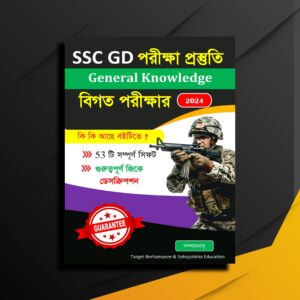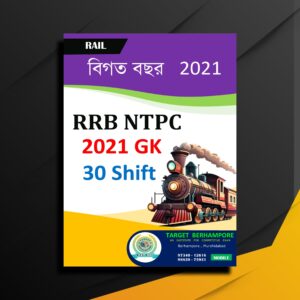The Staff Selection Commission (SSC) has officially released the SSC CGL Syllabus 2024 for both Tier 1 and Tier 2, along with the notification PDF on its official website. Candidates planning to take the exam should review the SSC CGL Syllabus and Exam Pattern thoroughly before starting their preparations. This year, the Tier 1 examination is set to take place from September 9 to September 26, 2024. For the convenience of candidates, we have provided detailed information about the SSC CGL 2024 Syllabus in the article below.
SSC CGL Syllabus 2024
The SSC CGL Syllabus for 2024 encompasses four main subjects: General Knowledge, Quantitative Aptitude, General Reasoning, and English Comprehension. Candidates should begin their preparation by thoroughly mastering the essential concepts, rules, and formulas in Quantitative Aptitude, General Reasoning, and English Comprehension. For General Knowledge, it is advisable to study the fundamentals using NCERT books.
The SSC CGL examination consists of two stages: Tier I and Tier II, each varying in difficulty. Both tiers are conducted online, with the Tier I exam serving as a qualifying test, while the final selection of candidates is determined by their performance in the Tier II exam.
SSC CGL Selection Process 2024
Before diving into the syllabus and exam pattern, it’s essential for candidates to understand the SSC CGL Selection Process. The selection consists of two stages: the Tier 1 and Tier 2 Computer-Based Tests (CBT). Tier 1 is a qualifying exam, featuring objective questions totaling 200 marks. The Tier 2 exam determines the merit list and presents a higher level of difficulty compared to Tier 1. Below, you can find a detailed tier-wise breakdown of the CGL Exam Pattern.
| SSC CGL Selection Process 2024 | ||
|---|---|---|
| Tier | Type | Mode |
| Tier – I | Objective Multiple Choice | Computer-based (online) |
| Tier – II (Paper I and II) | Paper I is Compulsory for all posts whereas Paper II is for candidates applying for Junior Statistical Officer (JSO).Objective Type, Multiple choice questions, except for Module II of Section III of Paper-I will be asked. | Computer-based (online) |
SSC CGL Tier 1 Exam Pattern 2024
The Tier 1 examination of the CGL 2024 is a qualifying round that features questions totaling 200 marks. The exam duration is 60 minutes. Please refer to the table below for the detailed SSC CGL exam pattern for Tier 1.
Additionally, there is a negative marking of 0.50 marks for each incorrect answer.
| SSC CGL Tier 1 Exam Pattern 2024 | ||||
| S. No. | Sections | No. of Questions | Total Marks | Time Allotted |
| 1 | General Intelligence and Reasoning | 25 | 50 | A cumulative time of 60 minutes (1 hour) |
| 2 | General Awareness | 25 | 50 | |
| 3 | Quantitative Aptitude | 25 | 50 | |
| 4 | English Comprehension | 25 | 50 | |
| Total | 100 | 200 | ||
SSC CGL Tier 1 Syllabus 2024
The SSC CGL Tier 1 Syllabus for 2024 comprises four subjects: General Intelligence and Reasoning, Quantitative Aptitude, English Language, and General Awareness. Below, we have outlined the detailed syllabus for Tier 1 to help candidates understand the topics and sub-topics they need to focus on during their preparation.
| SSC CGL Tier 1 Syllabus 2024 | |
| Subjects | Topics |
| Quantitative Aptitude | AveragesBasic algebraic identities of School Algebra & Elementary surdsBar diagram & Pie chartComputation of whole numbersCircle and its chords, tangents, angles subtended by chords of a circle, common tangents to two or more circlesComplementary anglesDecimalsDegree and Radian MeasuresDiscountFractionsFrequency polygonGraphs of Linear EquationsHeights and DistancesHemispheresInterestMixture and AlligationPartnership BusinessPercentageQuadrilateralsRatio & ProportionRegular PolygonsRegular Right Pyramid with triangular or square baseRight Circular ConeRight Circular CylinderRight PrismSchool AlgebraSimilarity of trianglesSphereSquare rootsStandard IdentitiesTime & WorkTime and distanceTrigonometric ratioTriangleTriangle and its various kinds of centresRelationships between numbersProfit and Loss |
| General Intelligence and Reasoning | AnalysisArithmetic number seriesArithmetical reasoningBlood RelationsCoding and decodingDecision makingDiscriminationFigural classificationJudgmentNon-verbal seriesObservationProblem-solvingRelationship conceptsSimilarities and differencesSyllogistic reasoningSpace visualizationSpatial orientationStatement conclusionVisual memory |
| English | Active PassiveCloze testError SpottingFill in the BlanksIdioms and PhrasesOne word SubstitutionReading ComprehensionSentence CorrectionSentence ImprovementSentence RearrangementSpellings CorrectionSynonyms-Antonyms |
| General Awareness | Books and AuthorsCurrent AffairsImportant DaysImportant SchemesIndia and its neighboring countries especially pertaining to History, Culture, Geography, Economic Scene, General Policy & Scientific ResearchPeople in NewsPortfolioScienceSportsStatic GK |
SSC CGL Tier 2 Exam Pattern 2024
The Tier 2 phase is crucial as it determines the qualifying status of candidates who have taken the exam. The marks obtained in this tier will also influence the candidates’ post allocation based on their ranks.
Paper 1 consists of three sections, covering questions on Mathematical Abilities, Reasoning, General Intelligence, and General Awareness. Additionally, this paper includes questions from the Computer Knowledge Test and a Data Entry Speed Test.
Paper 2 focuses on Statistics, featuring 100 questions for a total of 200 marks, with a duration of 2 hours.
Paper 3 covers General Studies (Finance and Economics), also containing 100 questions worth 200 marks, with a time limit of 2 hours.
| SSC CGL Tier 2 Paper 1 Exam Pattern [Compulsory] | ||||
| Sections | Module | Subject | No. of Questions | Marks |
| Section I | Module-I | Mathematical Abilities | 30 | 60*3 = 180 |
| Module-II | Reasoning and General Intelligence | 30 | ||
| Section II | Module-I | English Language and Comprehension | 45 | 70*3 = 210 |
| Module-II | General Awareness | 25 | ||
| Section III | Module-I | Computer Knowledge Test | 20 | 20*3 = 60 |
| Module-II | Data Entry Speed Test | One Data Entry Task | ||
| SSC CGL Tier 2 Paper 2 & 3 Exam Pattern [Optional] | ||||
| Paper | Section | No. of question | Maximum Marks | Duration |
| Paper II | Statistics | 100 | 200 | 2 hours |
SSC CGL Tier 2 Syllabus 2024
The SSC CGL Tier 2 exam will be conducted online and consists of three papers:
- Paper I (Compulsory for all posts)
- Paper II for candidates applying for the posts of Junior Statistical Officer (JSO) in the Ministry of Statistics and Programme Implementation
- Paper III for candidates applying for the Assistant Audit Officer/Accounts Officer posts
The exam primarily features objective-type multiple-choice questions, with the exception of Module II of Section III in Paper I.
Once the Tier 1 examination concludes, candidates should begin preparing for the next stage by utilizing the SSC CGL Tier 2 Syllabus 2024. The detailed topics and subjects are outlined in the table below for candidates’ reference.
| SSC CGL Tier 2 Syllabus 2024 | |
|---|---|
| Module/Session | Subject/Topic |
| Module-1, Session-1, Paper-1[SSC CGL Mathematical Abilities Syllabus] | Computation of whole numbers, Decimals, Fractions, Relationships between numbers, Percentage, Ratio & Proportion, Square roots, Averages, Interest, Profit and Loss, Discount, Partnership Business, Mixture and Alligation, Time and distance, Time & Work, Basic algebraic identities of School Algebra & Elementary surds, Graphs of Linear Equations, Triangle and its various kinds of centres, Congruence and similarity of triangles, Circle and its chords, tangents, angles subtended by chords of a circle, common tangents to two or more circles, Triangle, Quadrilaterals, Regular Polygons, Right Prism, Right Circular Cone, Right Circular Cylinder, Sphere, Hemispheres, Rectangular Parallelepiped, Regular Right Pyramid with triangular or square base, Trigonometric ratio, Degree and Radian Measures, Standard Identities, Complementary angles, Mensuration, Heights and Distances, Histogram, Frequency polygon, Bar diagram, Pie chart |
| Module-2, Section-1, Paper-1[SSC CGL Reasoning and General Intelligence Syllabus] | Reasoning and General Intelligence Syllabus of SSC CGL: Questions of both verbal and non-verbal types, Semantic Analogy, Symbolic operations, Symbolic/Number Analogy, Trends, Figural Analogy, Space Orientation, Semantic Classification, Venn Diagrams, Symbolic/ Number Classification, Drawing inferences, Figural Classification, Punched hole/ pattern-folding & unfolding, Semantic Series, Figural Patternfolding and completion, Number Series, Embedded figures, Figural Series, Critical Thinking, Problem-Solving, Emotional Intelligence, Word Building, Social Intelligence, Coding and de-coding, Numerical operations |
| Module-1, Section-2, Paper-1[SSC CGL English Language And Comprehension Syllabus] | English Language And Comprehension Syllabus: Spot the error, Fill in the blanks, Synonyms, Antonyms, Spelling/ detecting misspelled words, Idioms & phrases, One-word substitution, Improvement of sentences, Active/ passive voice of verbs, Conversion into Direct/Indirect narration, Shuffling of sentence parts, Shuffling of sentences in a passage, Cloze passage, Comprehension passage |
| Module-2, Section-2, Paper-1[SSC CGL General Awareness Syllabus] | General Awareness Syllabus: India and its neighbouring countries especially about History, Culture, Geography, Economic Scene, General Policy & Scientific Research, Science, Current Affairs, Books and Authors, Sports, Important Schemes, Important Days, Portfolio, People in News |
| Module-1, Section-3, Paper-1[SSC CGL Computer Proficiency Syllabus] | Computer Proficiency Syllabus: Computer Basics: Organization of a computer, Central Processing Unit (CPU), Input/ Output devices, computer memory, memory organization, backup devices, PORTs, Windows Explorer. Keyboard shortcuts. Software: Windows Operating system including basics of Microsoft Office like MS Word, MS Excel, and PowerPoint, etc. Working with the Internet and e-mails: Web Browsing and searching, Downloading and uploading, Managing an E-mail Account, e-banking The basics of networking and cyber security include networking devices and protocols, Network and information security threats (like hacking, viruses, worms, Trojans, etc.), and preventive measures. |
| Paper II[Statistics] | Collection, Classification, and Presentation of Statistical Data –Primary and Secondary data, collection methods; data tabulation; Graphs and charts; Frequency distributions; and diagram presentation of frequency distributions. Measures of Central Tendency – Common measures of central tendency – mean median and mode; Partition values- quartiles, deciles, percentiles. Measures of Dispersion – Common measures of dispersion are range, quartile deviations, mean deviation, and standard deviation, as well as measures of relative dispersion. Moments, Skewness, and Kurtosis – This section covers the different types of moments and their relationship, the meaning of skewness and kurtosis, and the different measures of skewness and kurtosis. Correlation and Regression – Scatter diagram; simple correlation coefficient; simple regression lines; Spearman’s rank correlation; Measures of association of attributes; Multiple regression; Multiple and partial correlations (For three variables only). Probability Theory – Meaning of probability; Different definitions of probability; Conditional probability; Compound probability; Independent events; Bayes‟ theorem. Random Variable and Probability Distributions – Random variables; probability functions; expectation and Variance of a random variable; higher moments of a random variable; binomial, Poisson, Normal, and Exponential distributions; joint distribution of two random variables (discrete). Sampling Theory – Concept of population and sample; Parameter and statistic, Sampling and non-sampling errors; Probability and nonprobability sampling techniques(simple random sampling, stratified sampling, multistage sampling, multiphase sampling, cluster sampling, systematic sampling, purposive sampling, convenience sampling and quota sampling); Sampling distribution(statement only); Sample size decisions. Statistical Inference – Point estimation and interval estimation, Properties of a good estimator, Methods of estimation (Moments method, Maximum likelihood method, Least squares method), Testing of hypothesis, Basic concept of testing, Small sample and large sample tests, Tests on Z, Chi-square, and F statistic, Confidence intervals. Analysis of Variance – Analysis of one-way classified data and two-way classified data. Time Series Analysis – Components of time series, Determination of trend component by different methods, Measurement of seasonal variation by different methods. Index Numbers – Meaning of Index Numbers, Problems in the Construction of Index Numbers, Types of Index Numbers, Different Formulae, Base Shifting and Splicing of Index Numbers, Cost of Living Index Numbers, and Uses of Index Numbers. |
Module II of Section III of Paper-I (SSC CGL Computer Proficiency Syllabus)
Data Entry Speed Test (DEST) – Module II of Section III of Paper-I will include a 15-minute Data Entry Speed Test (DEST) conducted in Session II on the same day.
The DEST will require candidates to perform approximately 2000 key depressions within 15 minutes. Detailed instructions regarding the Skill Test will be provided by the Regional Offices of the Commission.
Candidates must type a passage of 2000 words in English on a computer within the allotted time. This test evaluates a candidate’s typing skills, and candidates will be given an article in English to type. The DEST is particularly important for those applying for the position of Tax Assistant (Central Excise and Income Tax) as part of the SSC CGL 2022 exam.
While the DEST is mandatory for all posts, it is qualifying in nature.
SSC CGL Syllabus 2024 PDF
Candidates can download the SSC CGL Syllabus 2024 PDF to include it in their study materials. This PDF will assist candidates in memorizing important topics to cover while helping them identify topics that are not part of the syllabus. Click the link below to download the Syllabus PDF.
How to Prepare with SSC CGL Syllabus 2024
To prepare effectively using the SSC CGL Syllabus 2024, start by gaining a thorough understanding of the syllabus and exam pattern for each tier. Break the syllabus down into sections such as Quantitative Aptitude, Reasoning, English, and General Awareness.
Prioritize topics based on their weightage and difficulty level. Develop a study schedule that encompasses all subjects and allocates time for daily revision.
Regularly practice with previous years’ question papers and take mock tests to enhance your speed and accuracy.
Pay attention to your weak areas while also reinforcing your strengths. Consistent practice and effective time management are essential for mastering the syllabus.







